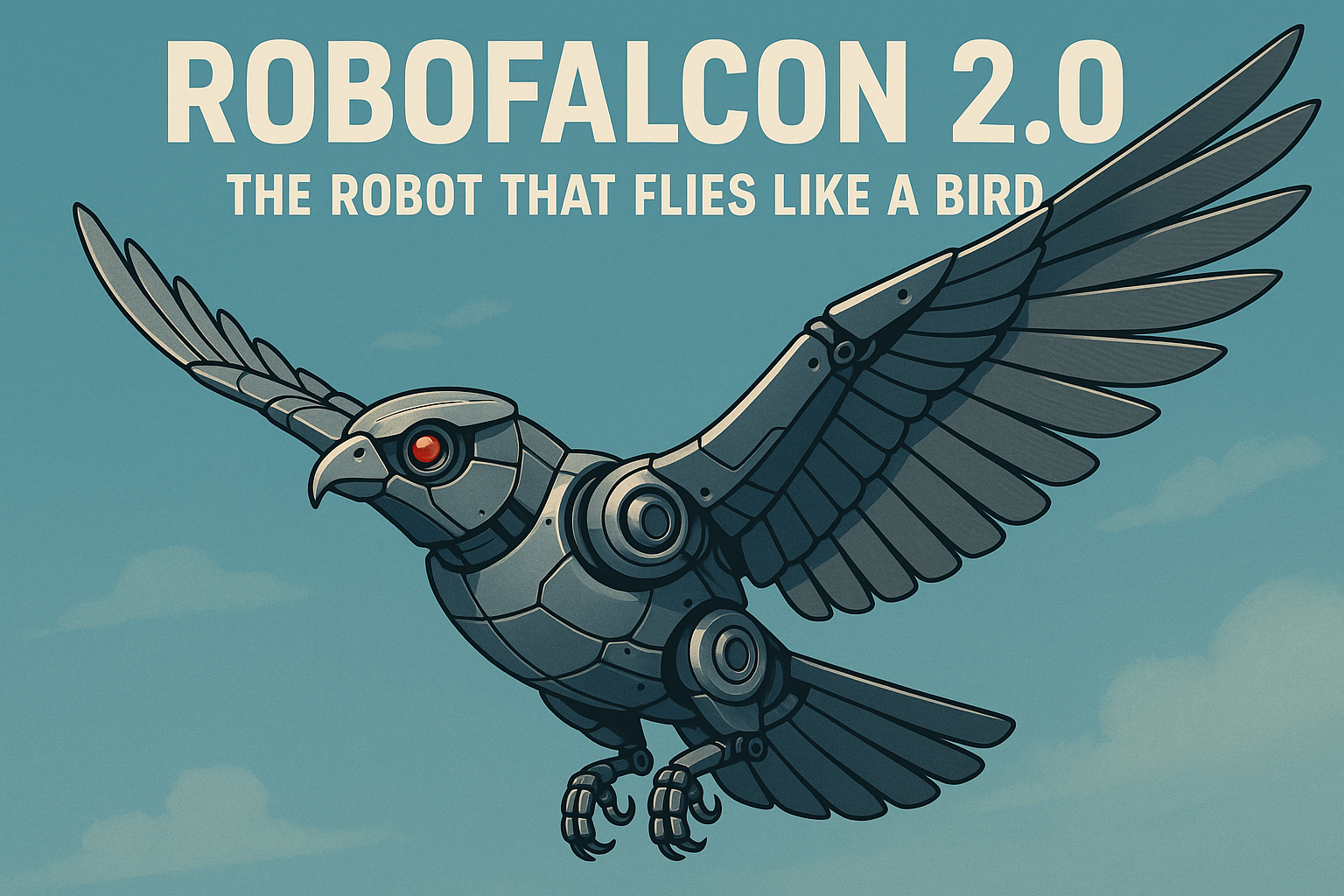Have you ever wished robots could fly like birds? Well, scientists in China have made something amazing — a robot called RoboFalcon 2.0. This robot has special wings that move almost exactly like real bird wings. And guess what? It can take off on its own and fly slowly without crashing!
This is a big improvement because the first RoboFalcon had some problems:
- It could not fly slowly.
- It needed help to take off.
Now, RoboFalcon 2.0 solves both problems with a clever new wing project.
How RoboFalcon’s Wings Work
The robot’s wings are very light — only 800 grams. But they are super smart! In just one wing beat, they can:
- Flap (move up and down),
- Sweep (move forward and backward),
- Fold (tuck in like a bird).
By combining all these actions, the robot takes off just like a bird. Once in the air, it can balance better, control its pitch (up and down tilt), and roll (side tilt).
What Makes It Different From Other Robots?
Most flying robots copy the simple wing gestures of insects or hummingbirds. They only move their wings in one or two ways. But birds and bats have three-dimensional wing movements, which make them great flyers.
The RoboFalcon 2.0 copies this 3D motion. Its sweeping sections create additional lift (the upward force needed to fly) and make the flight more stable. Scientists tested it in a wind tunnel and real-life experiments, and it functioned really well!
When the wings push down, they create lift. When they tuck up, they get ready for the next flap — just like how birds do it.
What It Can Do (and Can’t Do Yet)
RoboFalcon 2.0 showed it can:
- Take off on its own (no human help needed).
- Fly slowly and stay stable.
But it still has some problems:
- It can’t turn left or right easily (no yaw control).
- It uses a lot of energy, so it’s not very efficient yet.
The Future of Bird Robots
Experts believe that RoboFalcon 2.0 is a big step forward for bird-inspired robots. In the future, they want to improve its energy use and give it better turning control. This could help researchers build even cleverer flying robots — useful for rescue missions, science tests, or even exploring new worlds!



